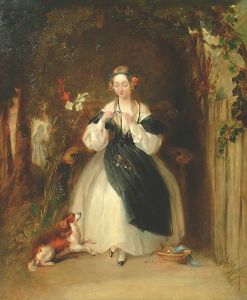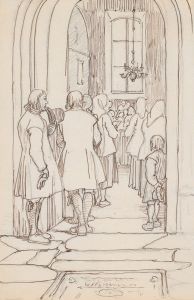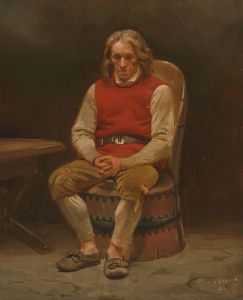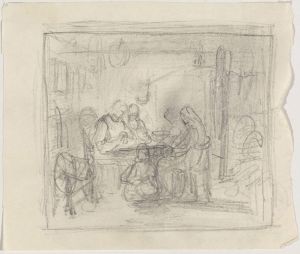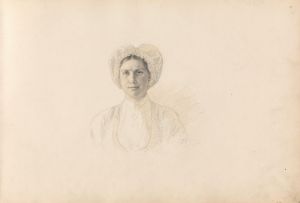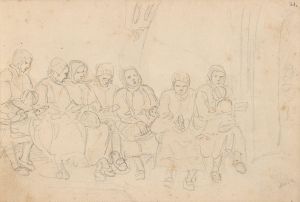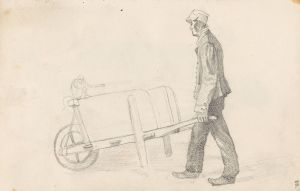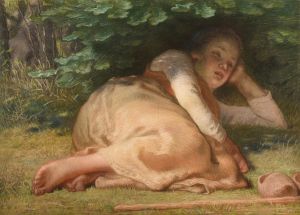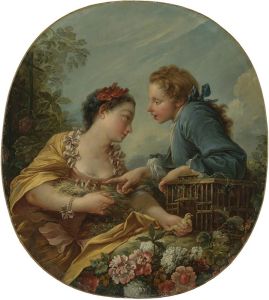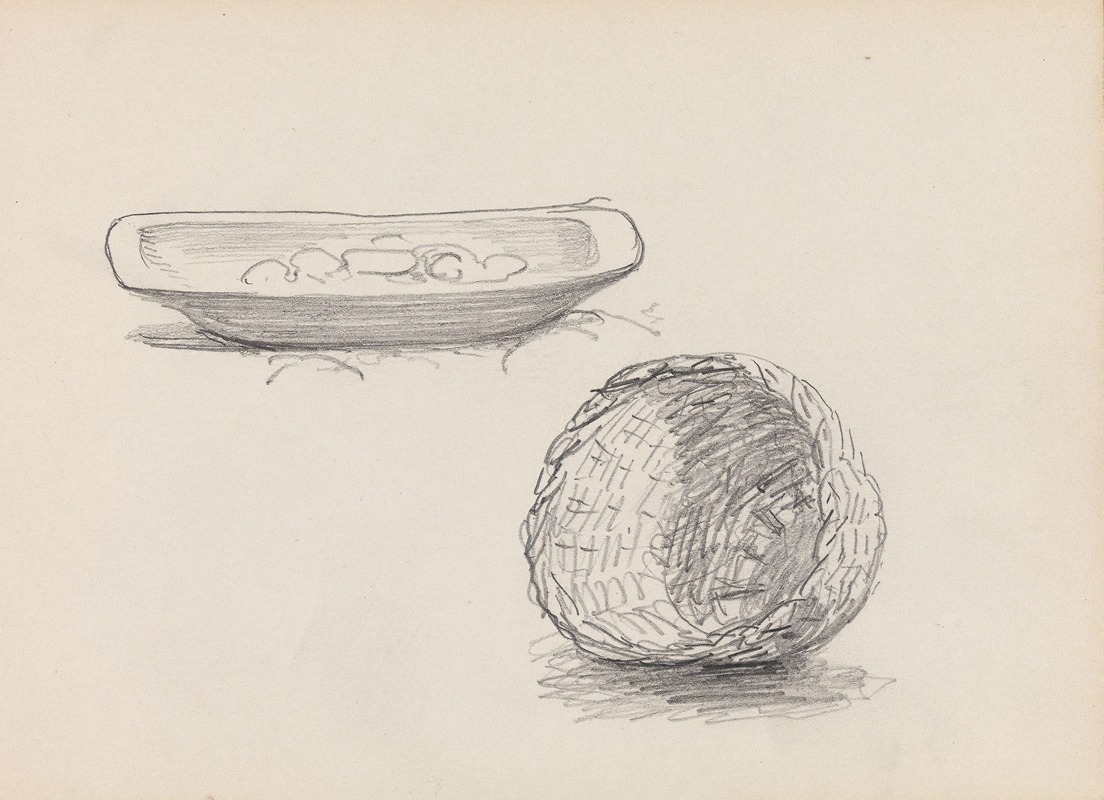
Trau og kurv
A hand-painted replica of Adolph Tidemand’s masterpiece Trau og kurv, meticulously crafted by professional artists to capture the true essence of the original. Each piece is created with museum-quality canvas and rare mineral pigments, carefully painted by experienced artists with delicate brushstrokes and rich, layered colors to perfectly recreate the texture of the original artwork. Unlike machine-printed reproductions, this hand-painted version brings the painting to life, infused with the artist’s emotions and skill in every stroke. Whether for personal collection or home decoration, it instantly elevates the artistic atmosphere of any space.
Adolph Tidemand was a prominent Norwegian painter in the 19th century, renowned for his depictions of Norwegian folk life and traditions. One of his notable works is "Trau og kurv," which translates to "Trough and Basket" in English. This painting is a testament to Tidemand's dedication to capturing the essence of rural Norwegian culture and the everyday lives of its people.
Adolph Tidemand was born on August 14, 1814, in Mandal, Norway. He studied at the Academy of Art in Copenhagen and later continued his education in Düsseldorf, Germany, which was a significant center for art at the time. Tidemand became a central figure in the Düsseldorf school of painting, which was known for its detailed and realistic style. His works often focused on historical and genre scenes, particularly those that highlighted Norwegian peasant life.
"Trau og kurv" is a fine example of Tidemand's genre painting, where he meticulously depicted scenes from rural Norway. The painting showcases his ability to portray the simplicity and dignity of everyday life. Tidemand's attention to detail and his use of color and light bring a sense of realism and warmth to the scene. His works are characterized by their narrative quality, often telling a story through the depiction of people and their surroundings.
In "Trau og kurv," Tidemand captures the essence of Norwegian rural life by focusing on common household items, such as a trough and a basket. These objects were integral to the daily activities of Norwegian peasants, used for various purposes in farming and domestic chores. By highlighting these items, Tidemand not only emphasizes their practical importance but also elevates them to symbols of cultural identity and heritage.
Tidemand's paintings, including "Trau og kurv," played a significant role in the national romantic movement in Norway. This movement sought to foster a sense of national pride and identity by celebrating the country's history, culture, and natural beauty. Through his art, Tidemand contributed to the preservation and appreciation of Norwegian traditions at a time when the country was undergoing significant social and political changes.
The impact of Tidemand's work extends beyond Norway. His paintings were exhibited internationally, and he gained recognition for his ability to convey the spirit of Norwegian life to a broader audience. Tidemand's art continues to be celebrated for its historical significance and its contribution to the understanding of 19th-century Norwegian culture.
"Trau og kurv" exemplifies Tidemand's skill in combining realism with a deep appreciation for his subjects. His work remains an important part of Norway's cultural heritage, offering insights into the lives of ordinary people and the values they held dear. Through his paintings, Tidemand has left a lasting legacy that continues to inspire and inform both art enthusiasts and historians alike.






